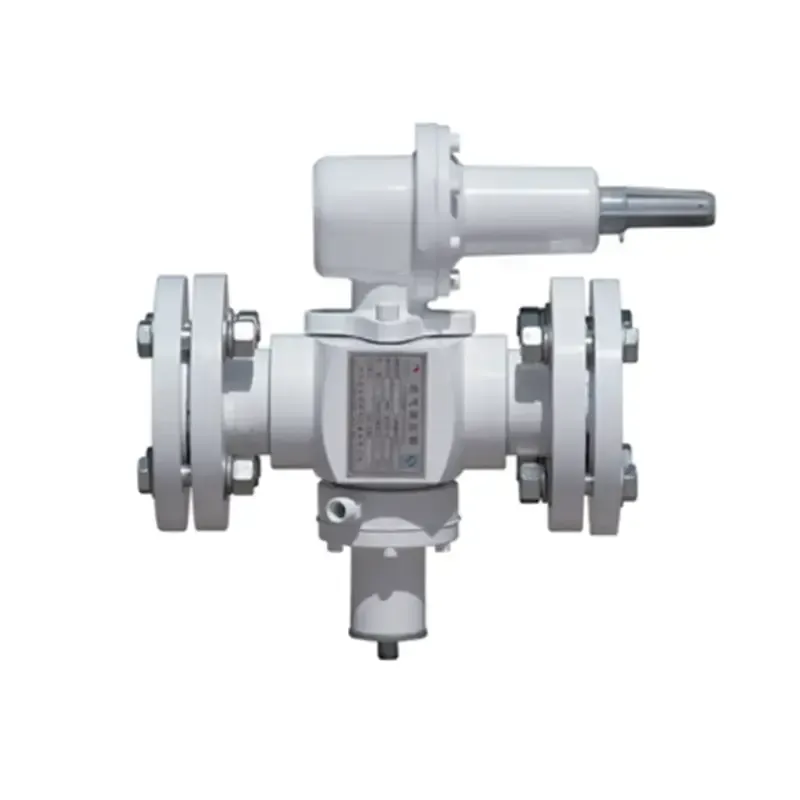
Nov . 06, 2024 18:59
Back to list
Electric Control Valve for Efficient Flow Regulation and System Optimization
The Role and Importance of Electric Regulating Valves in Modern Industries
Electric regulating valves play a crucial role in various industrial applications, ensuring efficiency, precision, and safety in the control of fluid flow. As industries continue to adopt more advanced technologies to enhance productivity and reduce costs, the demand for electric regulating valves has surged. This article explores the significance of electric regulating valves, their working principles, applications, and future trends.
What are Electric Regulating Valves?
Electric regulating valves are automated devices that control the flow of liquids and gases in a system. Unlike their manual counterparts, these valves are operated by electric actuators, allowing for precise adjustments and modifications in flow rates. The technology behind electric regulating valves includes various components such as sensors, controllers, and actuators, which work in tandem to achieve optimal performance.
Working Principles
The operation of electric regulating valves involves several key components. The electric actuator receives control signals from a controller, which usually indicates the desired position of the valve. Based on these signals, the actuator rotates the valve stem to open or close the valve, thereby regulating the flow of fluid. Sensors monitor parameters such as pressure, temperature, and flow rate, providing real-time data feedback to the control system. This closed-loop system ensures high levels of accuracy and responsiveness.
Applications Across Industries
Electric regulating valves are employed in a wide range of industries, each with specific requirements. Here are some notable applications
1. Chemical Processing In chemical plants, precise control of fluid flow is critical to ensure safety and product quality. Electric regulating valves help maintain optimal pressure and temperature conditions during chemical reactions.
2. Water Treatment In water treatment facilities, these valves manage the flow of water and chemicals, ensuring the effective treatment of drinking water and wastewater. They provide accurate dosing of treatment chemicals, enhancing water quality.
3. HVAC Systems Heating, ventilation, and air conditioning (HVAC) systems utilize electric regulating valves to control airflow and temperature in buildings. This regulation ensures energy efficiency and maintains occupant comfort.
electric regulating valve

4. Oil and Gas In the oil and gas industry, electric regulating valves play a vital role in controlling the extraction, transportation, and processing of hydrocarbons. They ensure the safe and efficient flow of fluids through pipelines and refineries.
5. Food and Beverage In food processing, maintaining hygiene and product consistency is paramount. Electric regulating valves facilitate the precise control of ingredients and ensure compliance with food safety standards.
Advantages of Electric Regulating Valves
Electric regulating valves offer several advantages that make them preferable over traditional mechanical solutions. First, their precision ensures highly accurate flow control, leading to improved process efficiency. Second, they can be easily integrated into automated systems, allowing for remote monitoring and control. This connectivity enhances operational oversight and minimizes the need for manual interventions.
Moreover, electric valves are generally more energy-efficient, as they can operate on lower power requirements compared to other types of actuators, such as pneumatic or hydraulic systems. This efficiency not only reduces operational costs but also contributes to a lower environmental impact.
Trends and Future Outlook
As industries shift towards greater automation and digitalization, the future of electric regulating valves looks promising. The incorporation of smart technologies, such as IoT sensors and advanced analytics, is expected to revolutionize valve performance. Predictive maintenance algorithms will minimize downtime by anticipating failures before they occur, while real-time data analysis will enable more informed decision-making.
Furthermore, with increasing emphasis on sustainability, electric regulating valves will likely see innovations aimed at further reducing energy consumption and enhancing material efficiency. As industries continue to innovate, electric regulating valves will remain a cornerstone of fluid management systems.
Conclusion
Electric regulating valves are indispensable in modern industrial applications, providing precise control, enhancing efficiency, and supporting automation. Their versatility across various sectors speaks to their importance in today's fast-paced industrial landscape. As technology advances, the role of electric regulating valves will evolve, leading to even greater innovations and improvements in process management. Embracing these advancements will be essential for industries aiming to enhance productivity and sustainability in the years to come.
Latest news
-
Safety Valve Spring-Loaded Design Overpressure ProtectionNewsJul.25,2025
-
Precision Voltage Regulator AC5 Accuracy Grade PerformanceNewsJul.25,2025
-
Natural Gas Pressure Regulating Skid Industrial Pipeline ApplicationsNewsJul.25,2025
-
Natural Gas Filter Stainless Steel Mesh Element DesignNewsJul.25,2025
-
Gas Pressure Regulator Valve Direct-Acting Spring-Loaded DesignNewsJul.25,2025
-
Decompression Equipment Multi-Stage Heat Exchange System DesignNewsJul.25,2025

